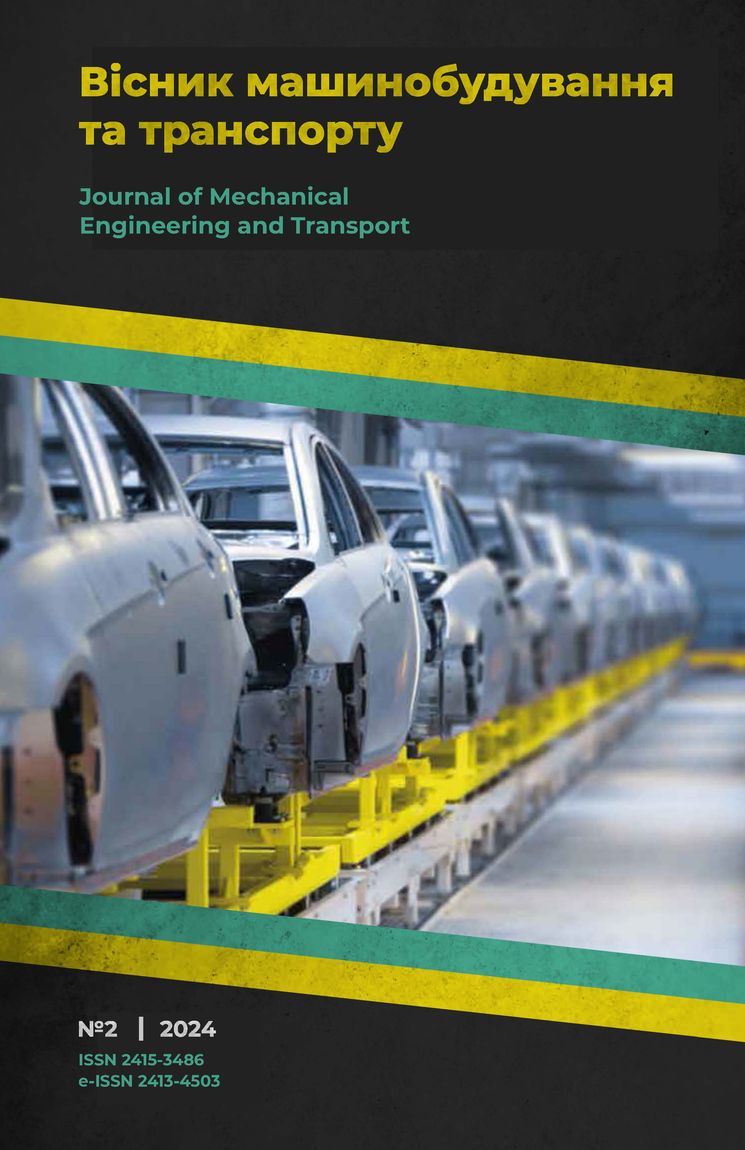Investigation of air exchange at the workplace of a bus driver
DOI:
https://doi.org/10.63341/vjmet/2.2024.161Keywords:
microclimate, thermal comfort, ventilation systemsAbstract
The focus on thermal comfort of the driver and passengers is important not only for reasons of convenience, but also for safety reasons. This article examines the microclimate at the driver’s workplace, which is formed on the basis of heat exchange between the exterior and interior of the cabin, as well as in the cabin itself. The influence of various factors and operating conditions on the microclimate in the bus interior is analysed. Attention is focused on local thermal comfort devices, since thermal comfort systems now work in an integrated manner, paying special attention to local thermal comfort. A ventilation system was modelled, which works to take fresh air into the cabin with forced removal to the outside. The air exchange at the workplace of a city bus driver with injection fans mounted in the roof of the bus, one of which works to draw fresh air into the cabin and the other to force it out, at air blowing speeds for four modes from 0.1 to 0.5 m/s, was modelled. The organisation of air exchange at the driver’s workplace is proposed, which can be used in the design of thermal comfort for new models of vehicles, especially large-sized ones, such as buses
References
Konieczny, Ł., Burdzik, R., Jaworski, R, & Wierzbicki, S. (2018). Analysis of noise inside bus of hybrid bus vehicles. Vibroengineering Procedia, 19, 194-198. doi: 10.21595/vp.2018.20229.
Misanovic, S., Taranovic, D., Maljkovic, M., & Milicic, B. (2018). Measurement noise level of E-bus HIGER KLQ6125GEV3 on the polygon. IOP Conference Series: Materials Science and Engineering, 271, article number 012018. doi: 10.1088/1757-899X/1271/1/012018.
Orczyk, M. (2018). Analysis of internal noise of public transport buse. WUT Journal of Transportation Engineering, 121(null), 295-305. doi: 10.5604/01.3001.0014.461.
ISO 13731:2001. (2006). Ergonomics of the thermal environment - evaluation of thermal environments in vehicles. Retrieved from https://standards.iteh.ai/catalog/standards/cen/09cca904-4779-4ff5-85c3-48335ef23779/en-iso- 13731-2001?srsltid=AfmBOoomu5k71SO6zLozeFr-ASv3JVWc8Fm-pt8dR5az2QbTFHIa_UTz.
ANSI/ASHRAE Standard 55-2013. (2013) Thermal environmental conditions for human occupancy. Retrieved from https://www.ashrae.org/technical-resources/bookstore/standard-55-thermal-environmental-conditions-for-human-occupancy.
ISO 7730:2005. (2005). Ergonomics of the thermal environment – Analytical determination and interpretation of thermal comfort using calculation of the PMV and PPD indices and local thermal comfort criteria. Retrieved from https://www. iso.org/standard/39155.html.
Fanger, P.O. (1980). Proposed Nordic standard for ventilation and thermal comfort. In Proceeding international conference on building energy management. Florida: Elsevier.
Nilsson, H.O., & Holmér, I. (2002). Definitions and measurements of equivalent temperature, European Commission cost contract no smt4-ct95-2017. Development of standard test methods for evaluation of thermal climate in vehicles. Reading: LPP.
Nilsson, H.O. (2007). Thermal comfort evaluation with virtual manikin methods. Building and Environment, 42, 4000-4005.
Voychyshyn, Y.I., Yakovenko, E.I., Horbay, O.Z., Holenko, K.E., & Burian, M.V. (2022). Modelling the thermal comfort of a city bus by the PMV method using the CBE Thermal Comfort Tool. Modern Technologies in Engineering and Transport, 2 (19), 32-41. doi: 10.36910/automash.v2i19.901.
Foda, E., Almesri, I., Awbi, H.B., & Sirén, K. (2011). Models of human thermoregulation and the prediction of local and overall thermal sensations. Building and Environment, 46(10), 2023-2032. doi: 10.1016/j.buildenv.2011.04.010.
Alahmer, A., Abdelhamid, M., & Omar, M. (2013). Design for thermal sensation and comfort states in vehicles cabins. Applied Thermal Engineering, 36, 126-140. doi: 10.1016/j.applthermaleng.2011.11.056.
Alahmer, A., & Omar, M. (2013). Vehicular cabins’ thermal comfort zones; fanger and berkley modelling. Vehicle Engineering, 1(1), 19-32.
Kernytskyy, I., et al. (2021). Development of comfort and safety performance of passenger seats in large city buses. Energies, 14(22), article number 7471. doi: 10.3390/en14227471.
Cengiz, T.G., & Babalık, F.C. (2007). An on-the-road experiment into the thermal comfort of car seats. Applied Ergonomics, 38, 337-347. doi: 10.1016/j.apergo.2006.04.018.
Oi, H., Tabata, K., Naka, Y., Takeda, A., & Tochihara, Y. (2012). Effects of heated seats in vehicles on thermal comfort during the initial warm-up period. Applied Ergonomics, 43, 360-367. doi: 10.1016/j.apergo.2011.05.013.
A place to enjoy the ride: Basic Plus control area and Comfort Plus control area. (n.d.). Retrieved from https://www. mercedes-benz-bus.com/uk_UA/models/tourismo-rhd/comfort-and-design/comfort.html.
Yang, H., Wang, Y., & He. T. (2015). The analysis on the effect of passenger car air conditioning and distribution with different inlet parameters. In International conference on information sciences, machinery, materials and energy (ICISMME 2015) (рр.229-233). Amsterdam: Atlantis Press. /doi: 10.2991/icismme-15.2015.45.
Downloads
-
pdf
Downloads: 2



